Imaging in glaucoma
- PMID: 15102512
- PMCID: PMC1941654
- DOI: 10.1016/S0896-1549(03)00102-0
Imaging in glaucoma
Abstract
Structural assessment using the imaging technologies discussed herein provides reproducible quantitative measurements of posterior segment ocular structures. These measurements have been found to provide useful data for glaucoma detection in various regions of the posterior segment. Further studies are needed to evaluate the utility of these technologies for pre-perimetric glaucoma detection and for monitoring glaucoma progression over an extended period.
Figures
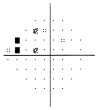
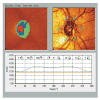

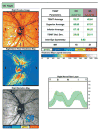
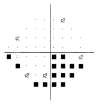
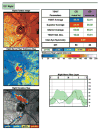
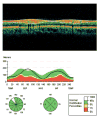
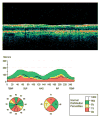
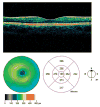
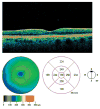

Similar articles
-
Detection of glaucoma by spectral domain-scanning laser ophthalmoscopy/optical coherence tomography (SD-SLO/OCT) and time domain optical coherence tomography.J Glaucoma. 2011 Jan;20(1):15-20. doi: 10.1097/IJG.0b013e3181d1d332. J Glaucoma. 2011. PMID: 20436370
-
Role of imaging in glaucoma diagnosis and follow-up.Indian J Ophthalmol. 2011 Jan;59 Suppl(Suppl1):S59-68. doi: 10.4103/0301-4738.73696. Indian J Ophthalmol. 2011. PMID: 21150036 Free PMC article.
-
Advanced imaging for glaucoma study: design, baseline characteristics, and inter-site comparison.Am J Ophthalmol. 2015 Feb;159(2):393-403.e2. doi: 10.1016/j.ajo.2014.11.010. Epub 2014 Nov 8. Am J Ophthalmol. 2015. PMID: 25447111 Free PMC article.
-
Role of optic nerve imaging in glaucoma clinical practice and clinical trials.Am J Ophthalmol. 2008 Apr;145(4):598-603. doi: 10.1016/j.ajo.2007.12.018. Epub 2008 Mar 4. Am J Ophthalmol. 2008. PMID: 18295183 Free PMC article. Review.
-
Imaging of the retinal nerve fibre layer for glaucoma.Br J Ophthalmol. 2009 Feb;93(2):139-43. doi: 10.1136/bjo.2008.145540. Epub 2008 Nov 21. Br J Ophthalmol. 2009. PMID: 19028735 Free PMC article. Review.
Cited by
-
Comparison of optical coherence tomography and scanning laser polarimetry measurements in patients with multiple sclerosis.Optom Vis Sci. 2010 Aug;87(8):576-84. doi: 10.1097/OPX.0b013e3181e3dcb3. Optom Vis Sci. 2010. PMID: 20495500 Free PMC article.
-
Variation in optical coherence tomography signal quality as an indicator of retinal nerve fibre layer segmentation error.Br J Ophthalmol. 2012 Apr;96(4):514-8. doi: 10.1136/bjophthalmol-2011-300044. Epub 2011 Sep 6. Br J Ophthalmol. 2012. PMID: 21900227 Free PMC article. Clinical Trial.
-
Correlations between retinal nerve fiber layer and visual field in eyes with nonarteritic anterior ischemic optic neuropathy.Am J Ophthalmol. 2007 Feb;143(2):288-294. doi: 10.1016/j.ajo.2006.09.045. Epub 2006 Oct 19. Am J Ophthalmol. 2007. PMID: 17157797 Free PMC article.
-
A method to detect progression of glaucoma using the multifocal visual evoked potential technique.Doc Ophthalmol. 2009 Apr;118(2):139-50. doi: 10.1007/s10633-008-9149-2. Epub 2008 Sep 25. Doc Ophthalmol. 2009. PMID: 18830654 Free PMC article.
-
The effect of acute intraocular pressure elevation on peripapillary retinal thickness, retinal nerve fiber layer thickness, and retardance.Invest Ophthalmol Vis Sci. 2009 Oct;50(10):4719-26. doi: 10.1167/iovs.08-3289. Epub 2009 May 6. Invest Ophthalmol Vis Sci. 2009. PMID: 19420342 Free PMC article.
References
-
- Leske MC, Heijl A, Hussein M, et al. Factors for glaucoma progression and the effect of treatment: the early manifest glaucoma trial. Arch Ophthalmol. 2003;121(1):48–56. - PubMed
-
- Goldberg I. Relationship between intraocular pressure and preservation of visual field in glaucoma. Surv Ophthalmol. 2003;48:S3–7. - PubMed
-
- The Advanced Glaucoma Intervention Study (AGIS); 7. The relationship between control of intraocular pressure and visual field deterioration. The AGIS Investigators. Am J Ophthalmol. 2000;130(4):429–40. - PubMed
Publication types
MeSH terms
Grants and funding
LinkOut - more resources
Full Text Sources
Other Literature Sources
Medical

